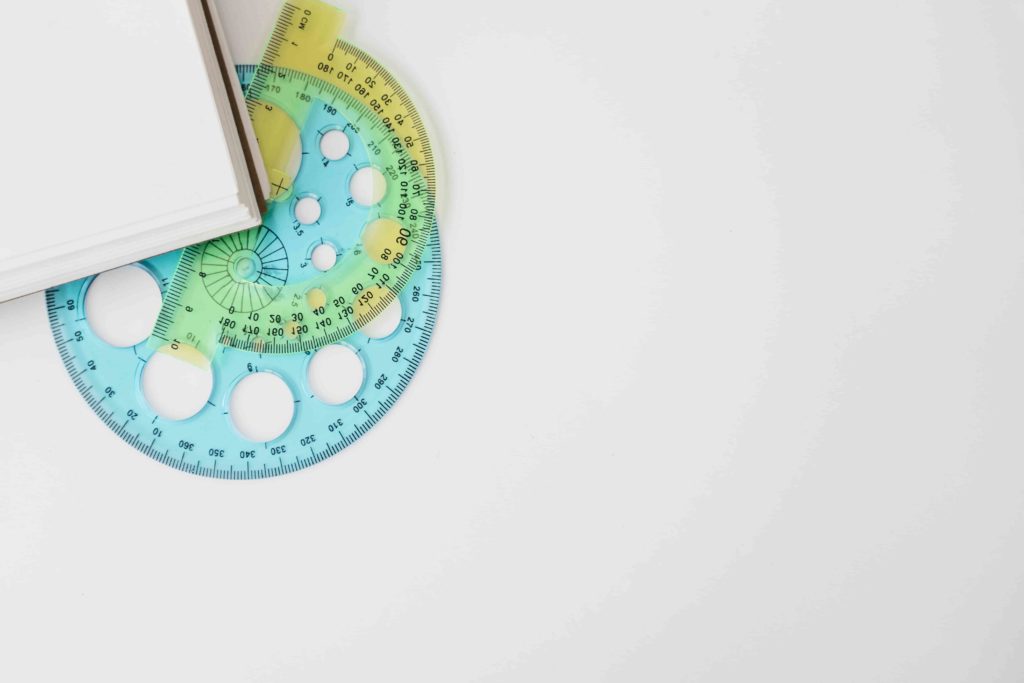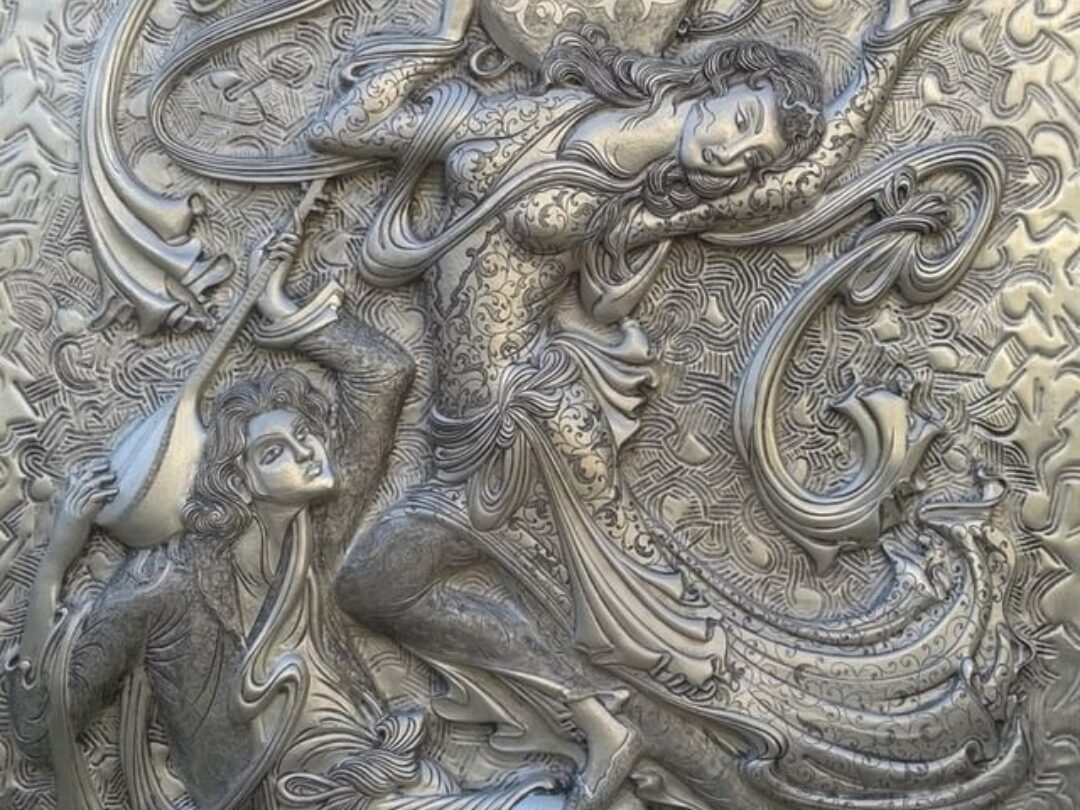
Picture from freepik – it.freepik.com
Whenever I think of “geometry”, a protractor comes up in my mind.
When I was in primary school, I begged my mother to buy me a protractor ahaha. Don’t ask me why. I’ve always been a wierdo.
But it’s not an essential tool for geometry, you know? Because you can divide a circle into equal parts by using only your compass and ruler.
WHAT IS A PROTRACTOR
If you don’t know what a protractor is here is what Wikipedia says: “A protractor is a measuring instrument, typically made of transparent plastic or glass, for measuring angles. “
The protractor is usually a semi-circle divided into one hundred and eighty parts or a full circle divided into three hundred and sixty parts.
Basically, it’s a circular or semi-circular tool with many small lines all around the circumference. Each line marks 1° (one degree). First real protractors were made more than five hundred years ago and they were used for map preparations and navigational charts for high latitude usage.
DO I USE IT?
The times that I’ve used a protractor in my Islamic geometry drawings can be counted on the fingers of one hand. There is nothing better than being able to divide a circle into equal parts with the use of a compass and straight edge. No shortcuts.
I don’t know why, but to me it feels like cheating, you get me? but then in 2019 something changed.
AN INTERESTING POINT OF VIEW
Last year I attended the Islamic geometry summer school in Spain. There, I saw Ameet (aka Ambigraph) using a tool he designed and made himself to speed up and make more accurate the process of making certain specific regular circle divisions which are useful in Islamic geometry.
I was shocked. And OF COURSE, I had to ask him what he was doing!!
He was pretty calm about that. He said that if you already know how to divide a circle into equal parts with a compass and ruler, sometimes shortcuts allow you to explore new patterns without spending your time making the same circle division over and over again. Now, THAT MADE SENSE!
I’m not saying that I use protractors now, but I will feel less guilty if I do.
What about you? Do you use the protractor when drawing Islamic geometry? How do you feel about that?
The Use of Protractor in Islamic Geometry
June 4, 2020



I’ve always though to use it too but am a newbie so haven’t explored how to other than bisecting a line. But seems it would be a legit shortcut. I love shortcuts.
A shortcut is a shortcut if you already know the main road. Otherwise is not a shorcut anymore.
If you want to learn how to divide a circle there is a tutorial the tutorial section on this website 🙂
I just love to go trough the entire process …starting with that horizontal line and a circle on a fresh sheet of paper makes me happy! Thanks as always for your posts!
wow I so love your IG, blog, videos and post! Thank you for making such an immense effort in sharing with us. I used a protractor last night, manage to get the basic shape but failed to get the rest of the end pattern. ;(
My obsession in Islamic geometry begun last week =) haha
dropping here to learn more from you. thank you again for the lovely tutorials!
Ahhhh, I’m such a purist! I use compass and straight edge every time. To me, the idea of using a protractor once you know how to subdivide a circle is like saying, "well, I know how to eat cereal and toast, so I’ll just start skipping breakfast from now on!" It’s such an important part of the artwork to me, to start out slowly and carefully with the traditional tools. Each to their own though, there’s room for different values and practices in this field
Hi Sandy, I just wanted to clarify something in your post. I’ve never used a protractor in my work and certainly don’t encourage it when I teach. The tool I showed you in the class in Spain was something I designed and made myself to speed up and make more accurate the process of making certain specific regular circle divisions which are useful in Islamic geometry. 1/14 of a circle (for 7-fold patterns) is 25.714…º which is not something a protractor would be much use for anyway. 1/18 of a circle (for 9-fold motifs) is not possible to carry out 100% accurately with ruler and compass and although good approximations are possible, this tool makes the construction clean and precise.
Craftspeople have always used tools to simplify their work, from the set square to the computer, and I’m certainly no tool purist. I enjoy addressing design problems and discovering solutions that allow me to head deeper into my practice.. making tools that extend my capabilities is one of these. That said, I have found that the strongest connection with the vast richness of this art form comes from a direct interaction with the simplest tools, that is drawing by hand assisted by ruler and compass, and I would always recommend this to anyone wanting to deepen their practice and connection with geometry.
Best wishes,
Ameet
Hi Ameet. It’s so nice to hear from you I know that the tool you use is not a protractor. Indeed, I’ve written "something similar to a protractor" because I don’t know how else to call it I’m glad that you have commented here so that people can read and understand better what the tool is about.
I don’t encourage the use of a protractor neither but your point of view has certainly changed my mind maybe I haven’t been clear enough in this blog post and I’m sorry if you felt like I was ascribing to you words that are not 100% yours.
I’m going to change this post later in the day
Thanks Sandy. I think it comes across differently when not in the context of a direct conversation so just wanted to be clear about what I meant.